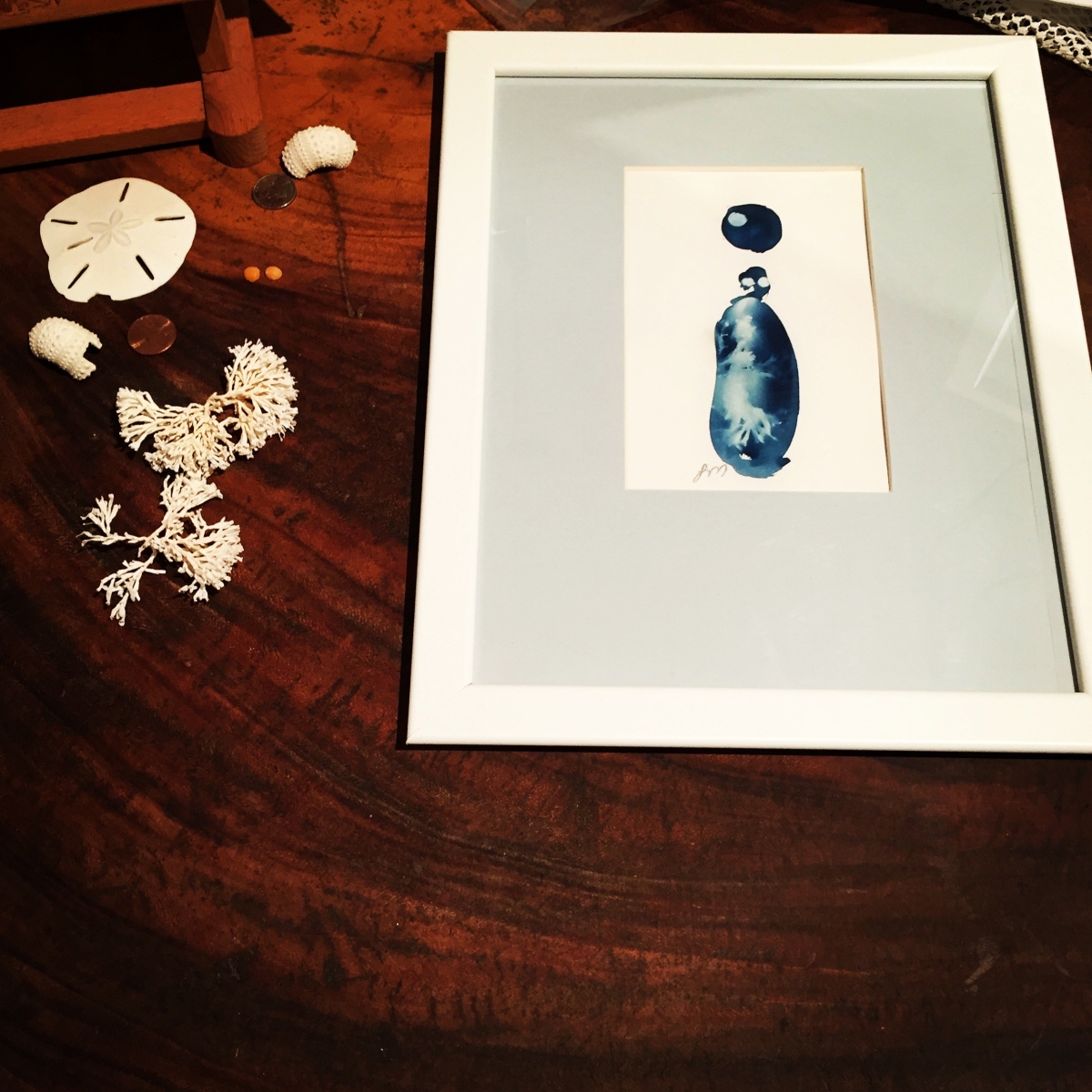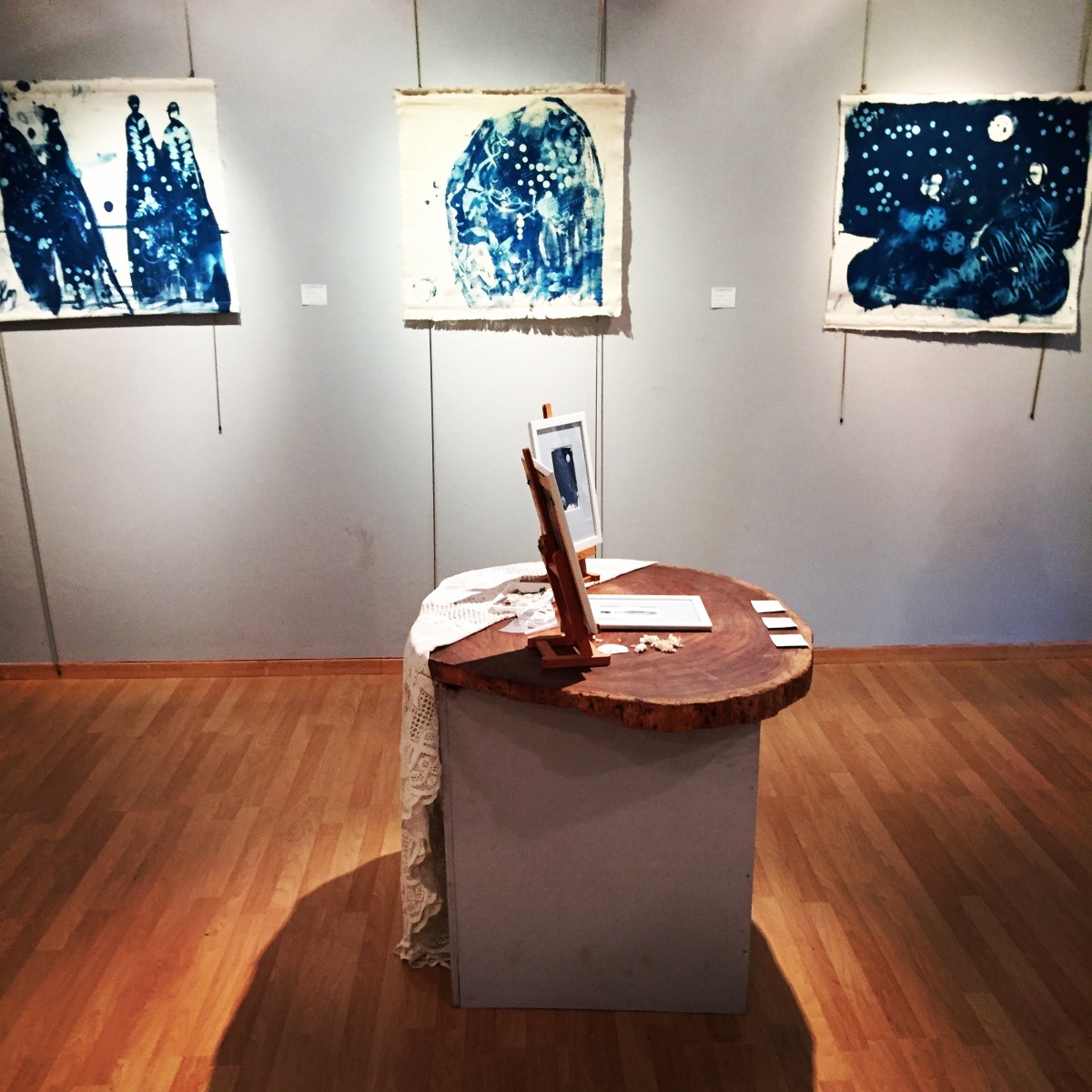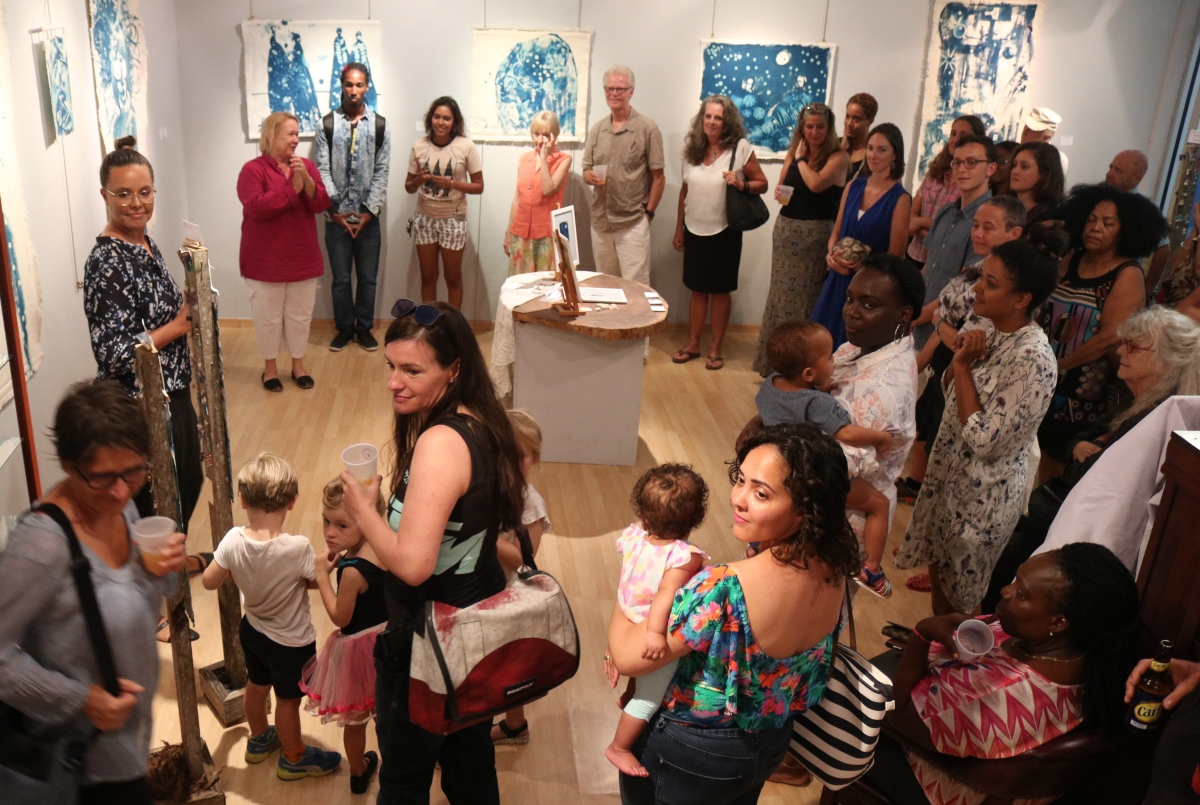By Asher Mains
The Susan Mains Gallery at Spiceland Mall International in Morne Rouge was filled last Thursday night with art lovers and supporters of LaVanda Mireles as she launched her first solo exhibit with her large scale cyanotypes. In Contact Lens Mireles explores concepts of isolation and connection by making pieces of art that feature material and process. Cyanotypes are the product of a process invented in the 1800’s in order to copy architectural drawings by exposing chemical layered material to sunlight. The sun turns the chemicals blue except where the sunlight is blocked, creating perfect imprints of the technician’s, or in this case, artist’s content. Cyanotypes are beautiful and are an exciting inclusion in the contemporary art scene. Anna Atkins made stunning cyanotypes of organic forms shortly after the process was invented in 1842. Man Ray made his ‘rayographs’ in the 1920’s with a similar process. Then Susan Weil and Robert Rauschenberg revisited and revived them in art in the 1950’s. In 2016, there was a museum exhibit in the US called, “Cyanotypes: Photography’s Blue Period” which chronicled some of the early works until now. This year at the Venice Biennale in the Arsenal (the curator’s picks), artist Thu-Van Tran showed large scale cyanotypes against an enormous backdrop, proving that the process is still exciting and relevant in contemporary art today. LaVanda Mireles has taken her place in a long and exciting tradition, particularly of women artists, who have taken art, science, and the human condition, with the help of the sun, exposing us all to the beauty of the everyday.
 (Cyanotypes and objects by LaVanda Mireles at Susan Mains Gallery. Photo Credit: Asher Mains)
(Cyanotypes and objects by LaVanda Mireles at Susan Mains Gallery. Photo Credit: Asher Mains)
Mireles talks about her process saying, “The environment in which I make this type of art is evident in the prints themselves. Most of the objects used were found in and around my house or washed up on various beaches here in Grenada.” Grenada is a place rich in material resources and for artists like Mireles, walking the beaches or anywhere on the island is like walking through an art supply store. She goes on to say about the figures in her work, “…the figures I depict seek connection with other beings and their environment. By looking through a lens, the figures are protecting themselves yet at the same time searching.” Material and environment have been shown to contribute and communicate about a person’s identity and by taking a process that was originally intended for technical or scientific use, Mireles draws an intriguing parallel between aesthetics and analysis. In some ways, the cyanotype pieces could be read as a sort of journal or diary of process and experience. In a tropical environment it is extra-fitting that we rely on the sun and water to make these processes, memories, and experiences evident.
 (Cyanotypes by LaVanda Mireles at Susan Mains Gallery. Photo Credit: Asher Mains)
(Cyanotypes by LaVanda Mireles at Susan Mains Gallery. Photo Credit: Asher Mains)
Mireles is relatively new to Grenada but she wasted no time in using art as a way of connecting and experiencing her new country. Mireles reflects Grenada’s strength as a creative incubator and someone who immediately started to feed the soil. In 2016 Mireles declared a sort of artistic bankruptcy – clearing out her entire body of work to that point when moving from Denver, Colorado, United States with her husband who is a medical illustrator at St. George’s University. This series represents a rebirth, a fresh start, a narrative of what can happen in a place like Grenada when you come in with empty hands but an open and receptive mind and heart. Mireles volunteers some of her expertise with artists during classes at Art School Greenz and has otherwise been an active participant in her new art community. This is connection. The isolation of her figures find moments of memory and narrative in the impressions of the objects in the piece but connection happens when we start connecting these disparate points into a whole. Brene Brown talks about disengagement as a form of betrayal. Elie Wiesel is famously quoted as saying, “The opposite of love is not hate, it’s indifference. The opposite of art is not ugliness, it’s indifference.” In both these cases, besides her beautiful execution of her process, Mireles’ work is about new beginnings and hope. Her work shows engagement and by extension, love and relationship with her new found home. We are fortunate to see these tangible musings and are privileged that Mireles would share them with us.
 (LaVanda Mireles on far left in front of her work at the opening of Contact Lens. Photo Credit: Asher Mains)
(LaVanda Mireles on far left in front of her work at the opening of Contact Lens. Photo Credit: Asher Mains)
Asher Mains is a Grenadian artist and art educator who is committed to continued development and excellence in the Grenadian art scene. For more articles visit http://www.ashershares.wordpress.com and visit http://www.ashermains.com to find out more about Mains’ practice.
